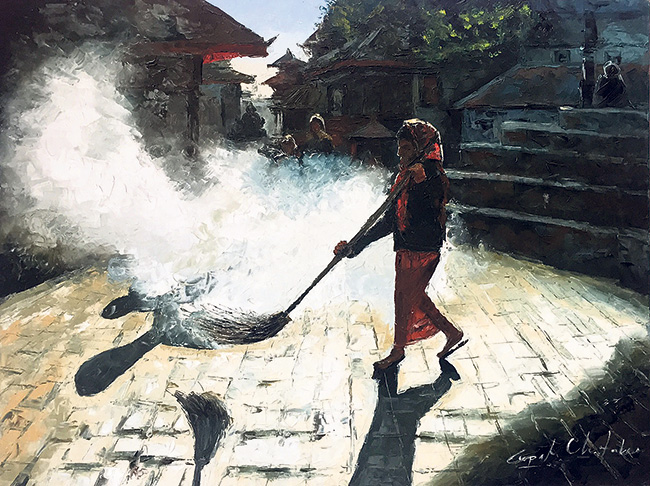Gopal Chitrakar is a renowned photo journalist as well as painter having devoted over 40 years in the fields. He was drawn to arts since early childhood because most of his family members were established in the painting field.
After completing his post-graduate in Journalism from New Delhi in 1997 and five years’ Diploma in Fine Arts from Lalit Kala Campus in 2029 BS, he was involved in teaching journalism and running programs in radio stations. He has also published a book called ‘People Power’ based on the 1991 peoples’ movement. Currently, he devotes all his time to painting.
My City’s Sonam Lama caught up with Gopal to talk about the experiences and challenges he has witnessed during his professional journey.
Gold price soars to new record high this week

How has your 40 years of professional journey been?
I initiated my career as a photographer for Gokhapatra newspaper in 2030 BS. Simultaneously, I worked for Radio Nepal as the news monitor for five years. After that, I joined Nepal Television as a program coordinator for three years. Moreover, I also taught journalism in Ratna Rajya Campus for 30 years. Despite my busy schedule, I made sure to continue my passion for painting and received several training on painting, radio broadcasting, and television production in the meantime.
Although my photographic skills are widely appreciated, I hardly took any formal classes on photography. I was passionate about photography so I carved my skills with constant practice.
What were the setbacks on your journey?
There were numerous challenges in each fields, however, those were inevitable for the growth that I was seeking back then. The major challenge in any profession unfolds when you are strayed from your passion and are unaware of your interest. Furthermore, the print and visual domain of journalism had not flourished as much because freedom of expression was not fully exercised back then.
How is photo journalism in Nepal different from other countries?
In my experience, I’ve found that international news agencies place a special priority on news that are subjected to human interests, while the scenario is quite different in the national context. I find the national news agencies more influenced and affected by politics. The practice, however, has subsided over the years in many ways.
 Has photo journalism in Nepal changed over the decades?
Has photo journalism in Nepal changed over the decades?
Photo journalism has undergone a massive transformation over the decades, resulting in an improved professional scope. From picture quality to the methods of disseminating news, things have improved over the years. Political transition in the past decades has opened new horizons for photo journalists and helped them grow in better ways. Creative ideas and rigorous effort by photojournalists during the political struggle have contributed in further improving the quality of photo journalism in Nepal.
How was your experience working with Reuters News Agency?
The experience was entertaining and challenging at the same time. Unlike the short period of time that I used to spend for national agencies, Reuters preferred to have highly qualified works that required days and months of efforts. Since their work demanded dedication, creativity and authenticity, the experience served as remarkable guideline to my career.



































